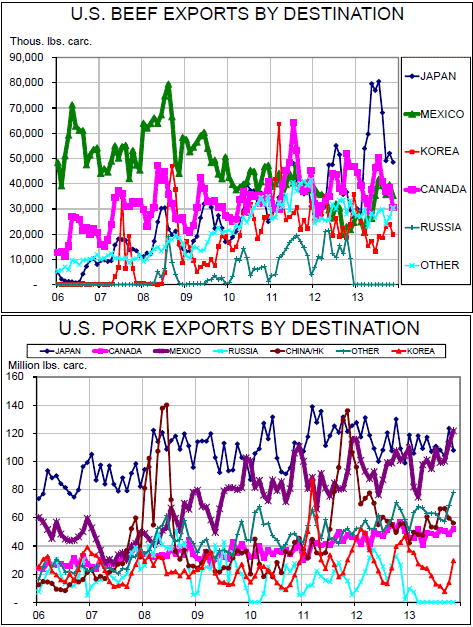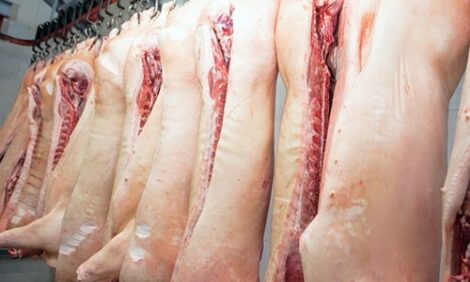



CME: Canada, Mexico Play Huge Role in US Pork, Beef Markets
US - The timely completion of US farm legislation (ie. The Farm Bill) appears to be in grave doubt. The houses of Congress had passed different versions of the legislation and a conference committee was charged with reconciling those differences and arriving at a final bill that would then go back to each chamber for a simply yes-no vote. No further modifications would be allowed, write Steve Meyer and Len Steiner.But the conference committee report completed yesterday and filed last night omitted two key provisions sought by livestock and meat groups:
- A “fix” for mandatory country-of-origin labeling (MCOOL) that would avert retaliatory tariffs on a broad range of US products by Canada and Mexico.
- A prohibition on the Grain Inspection Packers and Stockyards Administration (GIPSA) from enforcing and completing regulations it proposed pursuant to the 2008 Farm Bill and a prohibition from adopting policies similar to those proposals. The 2008 Farm Bill authorised GIPSA to write rules to clarify “unjust discrimination” and other terms in the Packers and Stockyards Act. Many industry groups and participants believed GIPSA badly overstepped the intent of those provisions and, perhaps, its authority under the act.
These omissions are a serious matter and led the producer organisations of the four major species and the two largest packer/ processor organisations to send a letter to the chairmen and raking members of both agriculture committees stating that they would now oppose final passage of the farm bill. Opposing legislation and beating legislation are two different things but these groups have a realistic chance in the House of Representatives where there is plenty of opposition to the Farm Bill based on food programme spending. Add in a few more “nay” votes due to the MCOOL and GIPSA omissions and the entire bill may go down in flames.
The most pressing issue, we believe, is the MCOOL fix. The World Trade Organisation has held that the US programme violates provisions of our trade commitments. The Obama administration has proposed a new labeling rule — which is already in effect and being enforced — that focused on a narrow (our judgment) item in the WTO’s findings regarding the review panel’s opinion that the US was gathering a great deal of detailed information but not providing those details to consumers. The administration’s idea of a fix was to provide more detail in the labels and so it enacted a rule which makes MCOOL MORE burdensome for imported product by providing details which will require more segregation of livestock born in other countries. We — and many, many others — doubt whether that rectifies at all the trade distorting impacts of the labeling programme. Canada and Mexico certainly share those doubts as they have challenged the new rule. The WTO just last week announced that a hearing will be held to address the issue on 18 February.
The issue at this point is not whether livestock from Canada and Mexico will be allowed into the US or whether product from them will be labeled. The key issue now is whether two of our largest export markets will be given license to impose retaliatory tariffs on US products. Canada has announced a list of products that will be targeted and it includes beef, pork and chicken. Mexico has not announced a list but has said it will target the ten largest categories of US exports to Mexico. All three will very likely be on that list.
The tariff rates for each product are not known at this time. Mexico slapped a 5 percent tariff on US hams and pork skins in 2010 over US prohibition of Mexican trucks operating in the US That tariff lasted for a little over a year.
And there is much at stake. As can be seen below, Mexico and Canada have both, at times, been our largest beef customer and now rank second and third. Mexico is challenging to be our largest pork muscle cut market and is our largest variety meat market, taking 36 per cent of our total pork variety meat exports. Canada is our fourth largest pork export market. The two countries account for about 25 per cent of total US chicken exports as well.









